April 22, 2016
Part fourteen of an investigative series
Divestment Investigative Report Series [Further Reading]: Part I • Part II • Part III • Part IV • Part V • Part VI • Part VII • Part VIII • Part IX • Part X • Part XI • Part XII • Part XIII • Part XIV • Part XV
“Sometimes people hold a core belief that is very strong. When they are presented with evidence that works against that belief, the new evidence cannot be accepted. It would create a feeling that is extremely uncomfortable, called cognitive dissonance. And because it is so important to protect the core belief, they will rationalize, ignore and even deny anything that doesn’t fit in with the core belief.” — Frantz Fanon, Black Skin, White Masks
Prologue: A Coup d’état of Nature – Led by the Non-Profit Industrial Complex
It is somewhat ironic that anti-REDD climate activists, faux green organizations (in contrast to legitimate grassroots organizations that do exist, although few and far between) and self-proclaimed environmentalists, who consider themselves progressive will speak out against the commodification of nature’s natural resources while simultaneously promoting the toothless divestment campaign promoted by the useless mainstream groups allegedly on the left. It’s ironic because the divestment campaign will result (succeed) in a colossal injection of money shifting over to the very portfolios heavily invested in, thus dependent upon, the intense commodification and privatization of Earth’s last remaining forests, (via REDD, environmental “markets” and the like). This tour de force will be executed with cunning precision under the guise of environmental stewardship and “internalizing negative externalities through appropriate pricing.” Thus, ironically (if in appearances only), the greatest surge in the ultimate corporate capture of Earth’s final remaining resources is being led, and will be accomplished, by the very environmentalists and environmental groups that claim to oppose such corporate domination and capture.
Beyond shelling out billions of tax-exempt dollars (i.e., investments) to those institutions most accommodating in the non-profit industrial complex (otherwise known as foundations), the corporations need not lift a finger to sell this pseudo green agenda to the people in the environmental movement; the feat is being carried out by a tag team comprised of the legitimate and the faux environmentalists. As the public is wholly ignorant and gullible, it almost has no comprehension of the following:
- the magnitude of our ecological crisis
- the root causes of the planetary crisis, or
- the non-profit industrial complex as an instrument of hegemony.
The commodification of the commons will represent the greatest, and most cunning, coup d’état in the history of corporate dominance – an extraordinary fait accompli of unparalleled scale, with unimaginable repercussions for humanity and all life.
Further, it matters little whether or not the money is moved from direct investments in fossil fuel corporations to so-called “socially responsible investments.” The fact of the matter is that all corporations on the planet (and therefore by extension, all investments on the planet) are dependent upon and will continue to require massive amounts of fossil fuels to continue to grow and expand ad infinitum – as required by the industrialized capitalist economic system.
The windmills and solar panels serve as beautiful (marketing) imagery and a panacea for our energy issues, yet they are illusory – the fake veneer for the commodification of the commons, which is the fundamental objective of Wall Street, the very advisers of the divestment campaign.
Thus we find ourselves unwilling to acknowledge the necessity to dismantle the industrialized capitalist economic system, choosing instead to embrace an illusion designed by corporate power.
+++
Divestment Launch Goes Global
“The creation of value continues to drive capitalism, yet the meaning of ‘value’ shifts and is reimagined within the context of neoliberal capitalism—Commodity Activism: Cultural Resistance in Neoliberal Times”— Commodity Activism: Cultural Resistance in Neoliberal Times, 2012
On September 18, 2014, three days prior to the Peoples Climate March, a press release shared by the website Look to the Stars, The World of Celebrity Giving, announced:
“A coalition of endowments and individuals committed to divesting from fossil fuels and investing in clean energy will announce pledges totaling $50 billion in assets and growing at a press conference in New York City on Monday, Sept. 22. The coalition, first launched in January, will announce scores of new domestic and international foundations, hundreds of high-net worth individuals as well as major NGOs, faith groups and health organizations. The next day, commitments will be presented at the UN Climate Summit with many world leaders in attendance including President Obama. Taking part in the press conference will be: Archbishop Desmond Tutu (by video), Mark Ruffalo, actor, Stephen Heintz, President of the Rockefeller Brothers Fund, David Blood, formerly Goldman Sachs, co-founder Generation Investment, Agnes Abuom, principal at the World Council of Churches and Ellen Dorsey, Executive Director Wallace Global Fund (moderating)” [Emphasis added]
Three days later on September 21, 2014, the People’s Climate March took place in New York City. This spectacle was overseen/managed in part by the Rockefeller Brothers Fund. The members only “State of Play on the People’s Climate March” event listed by the Environmental Grantmakers Association Website (posted 08/20/2014 – 1:00pm) stated the following:
“An unprecedented 550 organizations from labor, faith, environment and justice movements are coming together to make the September 21st People’s Climate March the largest ever public mobilization on climate. Join us to learn why such a huge diversity of organizations, networks, and individuals are mobilizing at this key moment, just days before the Climate Leaders Summit hosted by Ban Ki-moon. We’ll discuss how organizations are working together to bridge movements, as this effort not only seeks to raise awareness for climate impacts, but also open a significant political narrative about economic and environmental justice.
Speakers:
- Irene Krarup, Executive Director, V. Kann Rasmussen Foundation (moderator)
- Emma Ruby-Sachs, Campaigns Manager, Avaaz
- Jamie Henn, Political and Communications Director, 350.org
- Eddie Bautista, Executive Director, NYCEJA”
“This will be the first of a series of two calls – the second will be a funder-only conversation during the first week of September. If you are unable to make either call and still want to learn more, please feel free to contact Stephanie Bencivenga of Rockefeller Brothers Fund (sbencivenga[at]rbf.org) or Irene Krarup of V.K. Rasmussen Foundation (ikrarup[at]vkrf.org).” [Emphasis added]
One would be naïve to believe that there was not (and continues to be) an intense amount of coordination and concerted effort functioning behind the scenes. A unification of all players woven within the non-profit industrial complex, united in one strategic purpose: To expand, further capture and create new capital markets, with a supportive public under the guise of a “new economy” to which the divestment plays a pivotal role.
[Here it must be noted that the media circus surrounding the Peoples Climate March effectively eclipsed the first UN World Conference on Indigenous Peoples which took place on September 22-23, 2014, planned years in advance.]
Although it is comforting to most (for reasons difficult to comprehend) that the now global climate marches appear to be led by Rockefeller’s multi-million “scruffy little outfit” 350.org [1], the NGO at the helm of all these machinations is still Global Call for Climate Action (TckTckTck) – an NGO with a slightly damaged patina – damage extensive enough that they obscure their clout from the glare of the public spectacle. This is a simple sleight of hand considering 350.org is a founding partner of GCCA.
“GCCA worked behind the scenes for over a year to prepare for the biggest date in 2014, leveraging every possible asset and contact to rally around the historic Peoples’ Climate March in the run-up to the UN Climate Leaders Summit…. In the preceding months, GCCA convened weekly calls with key partners 350.org, Avaaz, USCAN and Climate Nexus to catalyse activities and identify gaps…. Everything came together on the day as we bore witness to the world’s biggest ever climate march, and inspiring events across the globe, with world leaders, business people, activists, parents and artists walking shoulder-to-shoulder.” — GCCA Annual Report 2014
GCCA, an initiative that began in Bali (2007) with a $300,000 funding commitment from the Quebec government, is a “coalition of twenty key international organizations” including Avaaz, 350.org, Greenpeace , Kofi Annan’s Global Humanitarian Forum, OXFAM, WWF, World Council of Churches, Union of Concerned Scientists, Equiterre, Global Call to Action against Poverty (also co-chaired by Kumi Naidoo), and the Pew Environment Group. [Source]
+++
On February 19, 2015, the co-opted CJN! listserv shared a communiqué in regard to the divestment campaign with the following subject line: “Fossil fuel divestment seems to frighten London financial bourgeoisie.”
This “observation” amounts to willful blindness at its best.
The first question to ask of any campaign is this: What do the oligarchs wish to gain via the financing of this campaign? Aside from the shaping, managing and over-seeing/controlling of (and even the creation of) “movements” – while simultaneously possessing the ability to effectively enforce self-censorship via what amounts to an unspoken, agreed upon alibi – oligarchs are primarily interested in not only maintaining power, but also expanding it. (A quick glimpse into the demise of real movements since foundation funding started flowing like the River Nile in the sixties confirms this to be true, with a prime example being the funding used to counteract and destroy the powerful and revolutionary Black Power movement while using its largess to appropriate any remaining shards after its demise.) The capitalist’s way to expand power is via the pursuit, expansion and capture of capital, furthering profits and market share. Thus, when we ask what oligarchs wish to gain via the financing of particular campaigns, one must always consider not only how the campaign could/will affect capital but also the ideologies surrounding capital.
Using the Keystone XL (KXL) campaign as an example, the billionaire Warren Buffett (financial advisor and close confidant to Barack Obama) legally funneled over 26 million dollars (as of 2011) into the Tides foundation. In turn, Tides doled out the money to NGOs that would campaign against the tar sands pipelines, including the KXL, which became the focal point of not only all tar sands campaigns, but the primary focal point of the “environmental movement” in North America. Hence, while all eyes were on a single pipeline (KXL) for years, Buffet built a billion dollar rail dynasty with zero dissent. Today, more oil is being produced in North America than ever before. In 2013, rail delivered 407,761 carloads of crude (approx. 300 million barrels of oil). This amounts to more than a 4,000% increase from 9,500 carloads in 2008. [Source: The Association of American Railroads.] No one blinked an eye when on July 6, 2013 a train carrying Bakken Formation crude annihilated downtown Lac-Mégantic, Quebec killing 47, 5 of whom were literally vapourized. Many more environmental disasters and explosions due to crude-via-rail derailments would follow, as would more deaths.
Both framing and language is paramount in the social engineering of a global populace. Consider the media headlines for the Rockefeller Brothers Fund (RBF) Divestment announcement that strategically coincided with the aforementioned “People’s Climate March” and the United Nations climate summit that followed in NYC on September 23, 2014. The words “Rockefellers”, “divest”, “$860 million”, and “$50 billion” flooded the media and social networks. The rash of announcements were met with admiration by many. Yet upon closer inspection, the RBF (the smaller Rockefeller foundation founded in 1940) divested a portion (7%) of its 860 million-dollar fund, which is the equivalent of $60 million (within a 5-year period). The “50 billion” repeatedly cited was a reference to the multiple “philanthropies and high-wealth individuals” which/whom together owned $50 billion in assets and had pledged to divest from fossil fuels over five years “using a variety of approaches” since the campaign was launched in 2011 – with the RBF comprising part of the 50-group coalition (Global Divest-Invest Coalition) who made the announcement. One question which does not arise is this: why are “philanthropies and high-wealth individuals” (including 650 individuals and 180 institutions) who/which hoard/control/own $50 billion dollars, tolerated by society at all? Considering the divestment campaign sells itself as a “moral” issue, it is revealing that the ethics behind so few people controlling so much monetary wealth never comes into question.
In 2014, global fossil fuel assets (oil, gas and coal) were valued at approx. $US 5-trillion. In comparison, assets belonging to Rockefeller Brothers Fund amount to approximately $US 860-million while the Rockefeller Foundation (founded in 1913) has assets of approximately $$US 4.2-billion (2014). And although the divestment campaign boasts that hundreds of institutions, local governments and individuals, (which represents over $US 50-billion in assets as of September 2014) have pledged to divest from fossil fuels, one must note that the Rockefeller Foundation— has shown no such desire. Nor have other powerful institutions/foundations such as the William and Flora Hewlett Foundation (with $US 9-billion in assets) or the David & Lucile Packard Foundation (with $US 7-billion in assets).
The heirs of the Rockefeller Family Fund (founded in 1967) maintain ties to the RFB. They also retained their personal stock in Exxon Mobil which made gains in 2014 of approx. 11%. While many believed that Exxon’s rejection of divestment was based upon fear of big money moving against it (i.e. “stranded assets“) – the Rockefeller Foundation and the RFF’s decision to hold onto their Exxon shares (along with the Rockefeller heirs) demonstrated that this premise was largely false.
Fast forward to 2015. How quickly things can change. November 13, 2015, Bloomberg: “OPEC reports the biggest oil glut in a decade.” As oil prices drop, demand/consumption continues to climb (globally by 1.8 million barrels per day to 94.6 million in 2015), while growth for the world economy continues to stand still. On October 1, 2015 it was reported that the according to the International Energy Agency, global oil demand was climbing at the fastest rate in five years. By December 2, 2016, committed pledges to divest from fossil fuels would reach $3.4 trillion. Floating oil storage (tankers), rolling oil storage (rail cars) and oil storage terminals became sought after commodities. On December 2, 2015, Bloomberg reported that the US is ploughing billions into infrastructure (with the various projects well underway) to pump the oil back underground into massive salt calverns, as well as additional storage facilities/terminals. Each calvern will hold 3.5 million barrels of oil.
Why? Not because of the divestment campaign, but rather because of a rare occurrence with a far greater significance. The global economy has become stagnant. Capitalism has reached it’s limits. And under the capitalist economic system, if the economy does not grow, it will collapse. Hence the need for new markets. Hence the need for a third industrial revolution. Hence the need for the global financialization of nature.
The Global Economy is Flying Close to Stall Speed
Oct 22, 2015:
“We are flying at close to stall speed,” Dr Summers said at the Center for American Progress business and economic policy conference.”
Rarely in our history does such a situation – to dismantle capitalism – present itself. Which begs the question – why are “movements” focused on saving the fledgling economic system rather than destroying it? The answer can be found in one word: privilege.
“The expanding crisis is a symptom of capitalism in an advanced state of disintegration…. All of these crises are surface manifestations of something more profound: the crisis of the world capitalist system itself. This crisis brings with it the danger of world war and a descent into barbarism. At the same time, it creates the objective basis for the overthrow of the capitalist system—the radicalization of the working class internationally.” [Source]
So much for Naomi Klein’s primary thesis of “Capitalism vs. the Climate“. Those of you who believed the intent of Klein’s book project (financed by the elites) was to actually dismantle the capitalist system must be sorely disappointed. With the industrialised economy now essentially on life support, the NPIC, in which Klein is embedded, is doing everything in its power to keep it alive.
Public relations knocks. On March 23, 2016 the RFF (130 million in holdings, 6% of the portfolio in fossil-fuel investments) announced it would withdraw all investments in fossil fuel companies “as quickly as possible” while publicly highlighting concerns/criticisms of Exxon Mobil. Exxon Mobil became engulfed in a PR nightmare when in September of 2016, the corporation was internationally exposed for deliberately covering up critical climate documents decades ago.
The effective (and well-deserved) slandering of Exxon timed with an historical global oil glut, served as a key opportunity for the insignificant RFF to bask the Rockefeller brand in the bright green spot light of divestment that 350.org et al. would bestow with zeal. A promise to divest “as quickly as possible” (allowing for up to 5 years) painted the ruthless and apathetic Rockefeller brand with one high-gloss, broad, green stroke.
Divest, Invest but Don’t Contest
Intermingled investment portfolios and limited partnerships are not required by law to disclose their investments and trading activities, thus, even large institutions that may oblige to take divestment as an undertaking, will more often than not, have no comprehension, on any given day whether they are invested in fossil fuels or not. Further still, for an institution to rid itself of all fossil fuel holdings (keeping in mind the reality that most every traded commodity on Earth is carbon based, carbon dependent or both, from cradle to grave), this would entail great caution presiding over a painfully slow process that ensures board members do not breach their fiduciary trust to keep the said fund solvent. In essence, this legal provision dictates that those who run corporations have a legal duty to shareholders first and foremost – a duty to maximize wealth (at every quarter) – infinitely. Not doing so can leave board directors and officers open to being sued by shareholders. It is telling that although the NPIC spends billions on environmental and climate campaigns, it does not seek/obtain legal council to abolish this outdated, ludicrous (and dangerous) law once and for all.
And while the atrocious act of corporations (protected by law) maximizing their profits for their shareholders, first and foremost, has been completely accepted and normalized, the racket of “interest” (money generating money; which was best described as the “fetishism of capital” by the economist Karl Marx, whose words are becoming more prescient everyday) has been firmly established in western society as an irrefutable fact of life – akin to breathing. And although it is understood by most that the payment of interest causes much hardship, stress and misery for the grossly exploited working class, the collective acclimatization to paying interest (to the rich) is so ingrained, it is difficult to imagine a society without it. And yet this exists in many societies throughout the Middle East (such as Libyan society before it’s grotesque annihilation led by the NATO States) via Islamic Banking Principles. Most American’s are likely unaware that Islam’s prohibition of interest and usury was not unprecedented. Renowned Greek philosopher, Aristotle, condemned acquiring of wealth by the practice of charging interest on money: “Money was intended to be a means of exchange; interest represents an increase in the money itself. Hence of all ways of getting wealth, this is the most contrary to nature.” Aristotle, The Politics, tr. Sinclair, pg. 46, Penguin [Source]
Clean Energy Infrastructure as Stranded Assets
To revisit the concept of stranded assets in regard to conventional fossil fuels, this notion is based upon the premise that conventional infrastructure and the associated commodity will become stranded following governments soon/eventual implementation of specific climate legislation [2] and/or increasingly stringent climate policies that would result in the commodity no longer being able to turn a profit– thus it would become stranded. Yet a stronger argument could be made for “clean” energy” infrastructure becoming stranded since it is also carbon based/dependent although this inconvenient truth remains unacknowledged in environmental circles. Consider the fact that climate science aside, humans are rapidly exhausting all Earth’s natural resources. (October, 2010: “…our demand on natural resources has doubled since 1966 and we’re using the equivalent of 1.5 planets to support our activities. If we continue living beyond the Earth’s limits, by 2030 we’ll need the equivalent of two planets’ productive capacity to meet our annual demands.”) And although this sounds ludicrous to the privileged who take most every aspect of the Earth’s life sources for granted, the warning is taken very seriously by the heads of NASA. Consider the response by Administrator of NASA, Charles Bolden speaking at the Humans to Mars summit:
“If this species is to survive indefinitely we need to become a multi-planet species. We need to go to Mars, and Mars is a stepping stone to other solar systems.” (Note that the quest to place greenhouses on and colonize Mars is well underway.
Thus, let us assume that to start, by 2020, just 4 short years away, the 60 trillion (needed for “clean” infrastructure alone) is raised. The task then becomes the companies creating this infrastructure fulfilling the promise of return on these investments by now building/creating the new global infrastructure. Unparalleled quantities of rare earth metals must be mined (by machines dependent on crude). The steel, copper, glass, as well as the energy required (and fossil fuels) to build infrastructure of this scale will be unprecedented. And it will generate massive growth as our Earth continues to be plundered.
But what of the Earth’s resources being completely depleted by 2030 as predicted by scientists – what then of the sixty trillion dollar investment – with monetary returns no longer insight? These uncompleted infrastructures, due to depleted resources, will be, without doubt, stranded assets. It’s hard to believe we are going to use what little of Earth’s finite resources that remain to fulfil the promise of climate wealth, by building a new “clean energy” infrastructure, rather than radically conserving and attempting to nourish, what remains. Consider that a mere half of 1% of the total energy consumed in the U.S. is generated by wind, solar, biofuels, or geothermal heat. Despite much touted efforts in Germany, Spain, and China, globally, in 2013, 1.1% of the world’s total energy was provided by wind with only 0.2% by solar.[Source | Source] Thus, imagine the magnitude of infrastructure required to increase the world’s total energy from renewables up to even 50%. It is unfathomable. It is this promise of unparalleled growth (under the guise of sustainability) that has the insatiable capitalists circling the climate crisis like voracious vultures. Rubbing salt in the wound is the fact that this new infrastructure will serve the same people that have always had the energy – the same 1% (anyone who can afford to get on a plane) responsible for 50% of the global GHG emissions. To put this into perspective, consider that only 5% of the world’s population has ever flown. [Source]
While many scientists, including NASA, note that the prospect that “global industrial civilisation could collapse in coming decades due to unsustainable resource exploitation and increasingly unequal wealth distribution”, the fact that sought after renewable systems such as solar thermal panels will not only push us towards this collapse but also, cannot exist outside of an industrialized civilization, appear to non-existent. The proverbial 8000 lb. elephant in the room is documented in a 2009 paper by professor of Atmospheric Studies at the University of Utah, Tim Garrett. Nov. 22, 2009: “In a provocative new study, a University of Utah scientist argues that rising carbon dioxide emissions – the major cause of global warming – cannot be stabilized unless the world’s economy collapses….”
“But most centrally, alternative energy spectacles protect us from considering our own growth, in consumption and population, which could not otherwise come to a peaceful end within the logic of the current expansionist milieu.” — Conjuring Clean Energy: Exposing Green Assumptions in Media and Academia, February 13, 2015
Let’s Pretend
But let’s pretend that Earth’s resources are infinite. It is assumed (foolishly) that fossil fuel power plants will be shut down once adequate solar and wind energy infrastructure is established. To date, there appears to be not a single example of a fossil fuel power plant that has closed, due to solar and wind. Under the industrialized capitalist system, logic conveys that this fact will not change in the future. In real life (not foundation financed campaigns that pander to public) the energy producers understand that all/any additional energy that may be produced via “renewables” will result in more energy to use/sell/waste and feed the engine of industrialized growth. This is the naked truth, which speaks to the very inconvenient truth upheld by the capitalist system. In a world built upon both denial and fantasy, techno-fetish made vogue, is the preferred choice.
Post-closure coal mine AMD (acid mining drainage) treatment on the East Rand, South Africa (Source: Future Terrains)
All non-ambient energy creates pollution and destruction, including renewables which are carbon based and dependent on carbon resources from cradle to grave – coupled with built-in obsolescence by design. Even when small or local in scale, renewable energy aids and abets growth, accelerates global warming, and contributes to further ecological destruction. Further ecological damage is caused by rare earth mining, as well as the acid drainage type mining for the necessary materials and special metals such as copper and lead. Added to this ecological devastation are the fossil fuels required/used for the mining and manufacturing of the renewable products and infrastructure. After the manufacturing they are transported using large-scale industrial equipment also dependent on crude. Finally, all these same resources are non-renewable. These very inconvenient facts are ignored. In a perfect world, in another time, perhaps renewable energies will be made of butterfly kisses and rare, precious Earth minerals will fall from the sky.
Acid mine drainage in Sudbury, Ontario, Canada
University of California physics professor Tom Murphy has calculated that “the batteries required to store this electricity in the U.S. alone (otherwise no electricity at night or during cloudy or windless spells) would require about three times as much lead as geologists estimate may exist in all reserves, most of which remain unknown. If you count only the lead that we’ve actually discovered, Murphy explains, we only have 2% of the lead available for our national battery project. The number are even more disheartening if you try to substitute lithium ion or other systems now only in the research phase.” [Source]
Cyanide Leach Mining and Acid Mine Drainage imperils the Futaleufu River Valley. Mine Tailings, Sudbury Ontario, Canada, photo: Edward Burtnyski
To not consider renewable energy infrastructures, global in scale, as equally contributing to growth, ecological destruction and climate change is willful blindness. Such willful blindness is sought after and fervently embraced by the same 1% of the population that creates 50% of all global greenhouse gas emissions today. Considering the magnitude of the task before us, it is little wonder we prefer stories, in which we write the script with a storyline of our liking. Our frail egos do not accept there are consequences to having plundered our planet in which the outcome will be dictated by nature.
La Ventana Drilling Results, Sonora Lithium Project Mexico
The brine pools and processing areas of the Soquimich lithium mine on the Atacama salt flat. This is the planet’s second largest salt flat, located in the Atacama desert of northern Chile
Bingham Canyon Copper Mine | © 2005 Mark Gulbrandsen
Chuquicamata copper mine, Chile
“Debord wrote that “the society which rests on modern industry is not accidentally or superficially spectacular, it is fundamentally spectaclist.” Perhaps he could have spoken similarly about modern energy or modern environmentalism. Debord’s spectacle is a divine deity around which duty-bound citizens gravitate to chant objectives without reflecting upon fundamental goals. It’s all too easy for us to miss the limitations of alternative energy, Debord might say, as we drop to our knees at the foot of the clean energy spectacle, gasping in rapture. This oracle delivers a ready-made creed of ideals and objectives that are convenient to recite and that bear the authority of science. These handy notions of clean energy reflexively work into environmental discourse. And as we have seen here, productivist environmentalists enroll media to tattoo wind, solar and biofuels into the subcutaneous flesh of the environmental movement. In fact, these novelties come to define what it means to be an environmentalist. And environmentalist’s aren’t the only ones lining up for ink.” — Conjuring Clean Energy: Exposing Green Assumptions in Media and Academia
Through the Lens of Deception – Burning Trees & Injecting C02 into Seas
The Sleipner project: The injection rate of almost one million tons per year makes the project one of the largest demonstrations of CCS in the world to date.
Aerial view of clearcut. Small clumps of trees left during clearcutting for biomass, in compliance with Nova Scotia’s Wildlife Habitat and Watercourse Protection Regulation © ECELAW- jamie Simpson
Divesting from fossil fuels and investing into a “clean economy” (for the wealthy) is predicated on market solutions. One such example is the pursuit of “clean coal”, which translates into the illusory carbon capture and storage technology and therefore ultimately translates into business as usual. The terminology “green energy” is equated with environmental stewardship and sustainability. Yet, behind closed doors, a large proportion of what corporations and states constitute as society’s perception of “green” energy is all but lost. A green energy plan or portfolio, as viewed by industry, investors, states, etc. is predominantly comprised of biomass and bio-fuel—by far two of the most damaging sources of energy. Yet under the guise of “clean energy” and the “new economy”, plans to expand these two deadly sources of energy continue to proliferate with the International Energy Agency (IEA) expecting a five-fold increase in wood-burning power plants and a threefold increase in biofuels by 2035. Another form of “clean energy” already taking place, unbeknownst to most all global citizens is the injection of CO2 into the ocean. Industry is already injecting CO2 on an industrial scale in the sandstone, in the North Sea and also in the Bering Sea in greater water depths. [Source]
Environmentalism is Dead – Replaced by Anthropocentrism
The acquiescence to the burning of billions of trees under the guise of environmental stewardship is both particularly disturbing—and revealing. Consider that bio-fuel, that is the growing of crops/grains/plants for fuel rather than food, was challenged by many environmentalists in the past. Yet the same argument, with the same key issues when applied to growing grain for direct human consumption, rather than growing grain for industrialized livestock, which is then brought to the market for human consumption, is avoided at all costs. Two questions must be asked. When did “environmentalists” stop caring about sentient beings, and, when did “environmentalists” stop caring about trees? The answer is 1) long ago, and 2) disturbing. Collectively, postmodern Western society has been acclimatized to believe/accept that anthropocentrism is environmentalism and anthropocentrists are environmental activists. This is an anthropocentrism that believes in, and caters to white supremacy, even if this belief is subconscious or subtle (aversive racism). This must be considered one of the best examples of successful social engineering to date, as financed by the world’s most powerful oligarchs.
A modern day “radical” movement such as Black Lives Matter™ is a “movement” that would (and perhaps has) make a past revolutionary such as Stokley Carmichael roll over in his grave. Naomi Klein™ has never been and never will be a Marilyn Buck – to even write the two names together in the same sentence feels sacrilege. The fierce revolutionaries that still exist, such as Omali Yeshitela are a rare, endangered species. Largely invisible behind the blinding light the oligarchs bask upon their chosen “leaders” such as McKibben™, Klein™ et al. The genocide being carried out against Indigenous leaders of warrior/matriarchal Indigenous tribes continues under the global dome of patriarchy. Euro-Americans who identify with those chosen by our oligarchs are more than happy to ignore the revolutionaries on the front lines of the struggle, ” demanding” (clicking) justice for those who toil in mines, while simultaneously demanding a new global infrastructure of “clean” energy absolutely dependent on steel, copper, lithium, rare Earth/precious minerals acquired only by land theft/displacement and the expansion of mining. The fact that the miners use essentially none of what is mined for their own lives, that all is captured and used for the west, for luxury/lifestyle, doesn’t even cross the mind of the audience targeted by the NPIC. Critical thinking is a largely dead concept.
“If we had as many people fighting for the revolution as we have fighting for useless voting rights and re-enfranchisement we might actually have something going on here. That’s bourgeois democracy in a nutshell: people fighting for the right to be equally fucked by the system, as long as it’s not so flagrant as being denied one’s right to vote.” — Jeff Weinberger
The Sell
The simple answer is that the 1% creating 50% of the all global greenhouse gas emissions must use a radically less amount of everything. Of course this reality is far less exciting than the dream of a consumerist green utopia. Impressing this green utopia as delusional upon the masses is even more difficult when collectively, your target audience has been spoon-fed entitlement, narcissism and privilege, since birth. The necessity to radically and drastically cut back all forms of consumption (which by default reduces demand for energy) flies in the face of a global economy intermarried and dependent upon infinite growth. Under the industrialized capitalist economy – no solutions outside of market solutions will be pursued or campaigned upon. Thus society, with youth as the sacrificial lambs of the 21st century at the forefront, is fed a lie – which is voraciously consumed. The path to “sustainability” is to follow the oligarchs yellow brick road to the “new” economy— paved in foundation dollars. The necessity for a radical contraction of consumption by the privileged is replaced with “solutions” comprised of more infrastructures, more technology, “green” consumption, more mining, more burning of fossil fuels, more growth—all of which will benefit (only in the short-term) the same 1% who have created and continue to accelerate the nightmare. Ask us for the moon. Even for Mars. But don’t ask us to change.
Bearing Witness. The Foundation is Laid. Assigning Monetary Value to Nature.
“Those who have been raised in the world of conservation may find it hard to adjust to a future where ecosystem assets and services are priced, invested in and traded, but this is an experiment that the world is now embarked upon—and must energetically pursue.” — The Biosphere Economy, 2010
On October 3, 1937 US President Franklyn D. Roosevelt, wrote that he found an editorial published by a “Great Falls Paper” on the “balancing the budget of our resources”, most compelling. Of course it is extremely doubtful (but not impossible) that Roosevelt’s interest was of pathological intent as is the case today. In the same vein as the funding/development of genetically engineered Golden Rice having commenced decades ago, the economic system/infrastructure for the commodification of all nature is not a new idea.
The concept of an ecosystem was first used in 1935. The term ecosystem was coined by British botanist Arthur Roy Clapham, at the bequest of British ecologist Arthur Tansley. In 1953 leading ecosystem ecologists Eugene P. Odum and Howard T. Odum (brothers ) published Fundamentals of Ecology. This publication (one of the most successful ecology textbooks ever published) made the ecosystem concept the central organizing principle of ecology. In 1970 Merton Love, agronomist and range scientist at the University of California, Davis, argued that “in time we would be able to manage wilderness much as we had learned to manage our agricultural systems. His vision was of total human control over ecosystems.” [Source]
The concept/theory of ecosystem services was not fully utilized until the 1980s and 1990s. A milestone in the monetization of ecosystem services (ES) was reached in 1997 when Costanza et al. published a dollar estimate of the value of the ES of the entire planet. [Source: Have Ecosystem Services Been Oversold?] The theory was formalized in 2005 upon the publication of UN Millennium Ecosystem Assessment report. While the original definition put forward by Gretchen Daily (co-founder of the Natural Capital Project) distinguished ecosystem goods from ecosystem services, Robert Costanza and colleagues’ later work and that of the Millennium Ecosystem Assessment lumped all of these together as ecosystem services. [3]
As an adjunct to more easily enable people to accept this lunacy being pawned off as fact, the NPIC is most adept at co-opting and sanitizing civil rights leaders such as MLK in order to further their brand. They steal the legitimacy and credibility of those now deceased to facilitate the present credibility and legitimacy of their efforts they cannot achieve on their own. Simply because they can truly possess neither by any rationale, unbiased analysis. How grotesque it is to destroy someone’s work, reputation and legacy when they are not even here to defend themselves. Perhaps nowhere has such gross co-optation occurred as what is now underway with the work of E.F. Schumacher. The very thing he strongly opposed – assigning monetary value to nature, is now being pushed forward and implemented by institutions who affiliate themselves with his name and work.
The term ‘natural capital’ was first used by in 1973 by economist and author E.F. Schumacher. There is irony in the fact that Schumacher was very critical of the ideology behind reducing everything in life to a monetary value within a market-based framework, stating that:
“In the market place, for practical reasons, innumerable qualitative distinctions which are of vital importance for man and society are suppressed; they are not allowed to surface. Thus the reign of quantity celebrates its greatest triumphs in ‘The Market’. Everything is equated with everything else. To equate things means to give them a price and thus to make them exchangeable. To the extent that economic thinking is based on the market, it takes the sacredness out of life, because there can be nothing sacred in something that has a price. Not surprisingly, therefore, if economic thinking pervades the whole of society. even simple non-economic values like beauty, health, or cleanliness can survive only if they prove to be ‘economic’.
To press non-economic values into the framework of the economic calculus, economists use the method of cost/benefit analysis. This is generally thought to be an enlightened and progressive development, as it is at least an attempt to take account of costs and benefits which might otherwise be disregarded al- together. In fact, however, it is a procedure by which the higher is reduced to the level of the lower and the priceless is given a price, It can therefore never serve to clarify the situation and lead to an enlightened decision. All it can do is lead to self-deception or the deception of others; for to undertake to measure the immeasurable is absurd and constitutes but an elaborate method of moving from preconceived notions to foregone conclusions; all one has to do to obtain the desired results is to impute suitable values to the immeasurable costs and benefits. The logical absurdity, however, is not the greatest fault of the undertaking: what is worse, and destructive of civilisation, is the pretence that everything has a price or, in other words, that money is the highest of all values.” [Source: Small is Beautiful, 1973]
Further irony arises with Schumacher’s name being co-opted by the NPIC as a key tool to build acquiescence for the assigning of monetary value to nature, with key players assigned to this task such as Bill McKibben (The Next System) who wrote a new forward for the 2010 edition of Schumacher’s Small Is Beautiful first published in 1973. In the decade that followed, the recently “killed” (“we’re going to have to kill green,” Jeremy Heimans) term “green economy” was coined in the Blueprint for a Green Economy (paper by Pearce, Markandya, and Barbier (1989). Today the term “natural capital” is identified as the Natural Capitalism economic model of “climate wealth” proponents Paul Hawken [676], Amory Lovins, and Hunter Lovins who in 1999 released their book: Natural Capitalism: Creating the Next Industrial Revolution. Hawken claimed that the term natural capitalism was misinterpreted adding that while he endorses “the spirit” of commerce and entrepreneurship, he does not endorse the “pathological” qualities inherent in “pure” capitalism.” The Natural Capitalism website states “it seems proper to declare that interest by listing our personal and institutional private-sector clienteles (omitting our larger public-sector and non-profit clienteles) during the past decade, which dates the (public) commencement of the project back to 1989—27 years ago.
“…we’ll build the green economy, but we just won’t talk about it and we won’t say that we’re doing it.” —Jeremy Heimans (Avaaz/Purpose co-founder, B Team), 2012
Natural Capitalism, Creating the Next Industrial Revolution Website:
“Our research and work were partly supported by grants from the Surdna, Columbia, Geraldine R. Dodge, MacArthur, Energy, Joyce, Aria, William and Flora Hewlett, Sun Hill, Charles Stewart Mott, Turner, and Goldman foundations, as well as the Educational Foundation of America, Environmental Protection Agency, G.A.G. Charitable Corporation, Merck Family Fund, J. M. Kaplan Fund, and Wallace Global Fund. Our appreciation for this support extends far beyond the publication of this book. These and other funders are investing in the preservation and restoration of the life on this planet, and are leaders all.”
It must be noted here that many of these same foundations are today at the forefront of the now global divestment campaign with Wallace Global Fund, Rockefeller Brothers Fund and the John Merck Fund, and at the forefront.
The full list of those involved/associated with the development of Natural Capitalism is both immense and incomplete. Personal and institutional private-sector clienteles (not including larger public-sector and non-profit clienteles):
Aerovironment, American Development Group, Arthur D. Little, Ashland Chemical, Aspen Ski Co., Atlantic Electric, AT&T, Baxter, Bayernwerk, Bechtel, Ben & Jerry’s, Bosal, Boston Consulting Group, Boston Edison, BP, Calvert, Carrier div. of UTC, Cesar Pelli, CH2M Hill, Ciba-Geigy, Citicorp, Collins & Aikman, ComEd, Continental Office, Daimler-Chrysler, Datafusion, Delphi, Diamonex, Dow Chemical, Emmett Realty, Esprit de Corps, First Chicago Building, Florida P&L, General Mills, GM, Gensler, Global Business Network, Grand Wailea Resort, Herman Miller, Hexcel, Hines, Honda, Hong Kong Electric, HP, IBM, Imagine Foods, Interface, Landis & Gyr, Levi Strauss & Co., Lockheed Martin, Michelin, Minnesota Power, Mitsubishi Electric, Mitsubishi Motor Sales America, Monsanto, Motorola, Nike, Nissan, Nokia, Norsk Hydro, Northface, NYSE&G, Odwalla, Ontario Hydro, OG&E, Osaka Gas, Patagonia, PG&E, PGE, Phillips Petroleum, Prince div. of Johnson Controls, Rieter, Royal Dutch/Shell, Sage J.B. Goodman Properties, Schott Glas, Schweizer, SDG&E, Searle, Shearson Lehmann Amex, STMicroelectronics, Stonyfield Farms, Sun Microsystems, Sun [Oil], Swiss Bank Corp./UBS, UniDev, Unipart, US West, Volvo, VW, Xerox, and Zoltek.
Prior to the formation and development of Natural Capitalism as an economic model, Natural Capitalism authors Amory Lovins, and Hunter Lovins, co-founded Rocky Mountain Institute (RMI) in 1982. In December of 2014 RMI merged with Richard Branson’s Carbon War Room. [“RMI now has approximately 75 full-time staff, an annual budget of $12 million, and a global reach and reputation. RMI advances market-based solutions, engaging businesses, communities, and institutions to cost-effectively shift to efficiency and renewables. We employ rigorous research, analysis, and whole-systems expertise to develop breakthrough insights. We then convene and collaborate with diverse partners—business, government, academic, nonprofit, philanthropic, and military—to accelerate and scale solutions.”]
The predominant terminology that appears today, “ecosystem services”, “natural capital”, the “biosphere economy”, “The Next System“, “regenerative capitalism”, “new economy”, etc. can be viewed as the decided-upon, politically correct terms identified by marketing executives as the terminology most palpable (and non-alarming) to global citizens – ready for public consumption after 27 years of meticulous finesse.
Note that the System of Environmental-Economic Accounting (SEEA) contains the internationally agreed upon standard concepts, definitions, classifications, accounting rules and tables for producing internationally comparable statistics on the environment and its relationship with the economy. Coordination of the implementation of the SEEA and on-going work on new methodological developments is managed and supervised by the UN Committee of Experts on Environmental-Economic Accounting (UNCEEA). The final, official version of the SEEA Central Framework was published in February 2014. [“The UNCEEA is a body composed of senior representatives from national statistical offices and international organizations. The SEEA Central Framework was released jointly by the UN, European Commission, Food and Agriculture Organization of the UN (FAO), Organisation for Economic Co-operation and Development (OECD), International Monetary Fund (IMF) and the World Bank.”] Other key organizations behind the commodification of the commons include the Natural Capital Coalition and the Natural Capital Declaration and Roadmap, Economics of Ecosystems and Biodiversity (TEEB), World Bank’s Wealth Accounting and the Valuation of Ecosystem Services (WAVE) and scores of others (many to be discussed further in this report). Many organizations/institutions/NGOs serve as instrumental in the development and implementation of the financialization of nature/payments for ecosystem services (PES)while most all environmental NGOS serve the over-all goal by providing simple distraction, silence and discourse.
The steadfast work in the goal to commodify the commons is not far off in the future. It is well underway. The ties and organizations to manifest this goal into a global reality are complex and convoluted hidden behind a marketed narrative. A narrative that global citizens will unite behind in the demand for a “new economy”.
Never has the phrase “be careful what you wish for’ been so apt and prophetic.
“The NPIC’S networked hegemony is propagated with a perversion of bio-mimicry. The complexity of the tangled and institutionalised tendrils make it virtually incomprehensible.” — activist/journalist Michael Swifte
The goal to capture the commons has been heavily financed and under development for at minimum 27 years (the “gradual strategy”). As previously stated, the schemes, campaigns and ideologies that foundations support via finance (i.e. investment), are always systematic, never haphazard. Thus, it stands to logic that a long-term strategy may well be the complete and total capture/control of the Earth’s remaining water (via privatization), food (via genetic engineering), forests (via REDD), all life (via privatization/financialization of nature/PES), and the Earths remaining fossil fuels (via divestment). Divestment could well be the ultimate long con. The elite give the windmills, solar panels and the “clean energy” portfolios to the liberals and the 1% status quo, (note that this encompasses 90 trillion between now and 2030 that is required for planned mega-infrastructure projects, which is up from initial estimates of $60-70 trillion as of 2015) while behind private investments, hedge funds and closed doors, the global super elite will invest/capture and control the planets most valuable remaining natural resources (all required for the “third industrial revolution”) as we spin into climate chaos.
Although such a hypothesis may seem a bit far-fetched to some, it is not inconceivable considering foundations and think-tanks lead in the intense study of, and shaping of, behavioural change. These same foundations/institutions have not only shaped whole societies, they have designed, thus altered the history of modern man. We are a socially-engineered species; a product of social engineering rather than a process of having evolved naturally. The time involved in commercializing all aspects of society until saturation was achieved amongst the populace (ensuring tomorrow’s ‘consumers’ would submissively acquiesce to an ideology of mass-commodification and privatization) would have been well-understood by foundations and think-tanks alike. Considering the 21st century explosion of land and water grabs that has gone hand in hand with little public interest shown (let alone dissent) in the race to privatize and commodify the Earth’s remaining commons, such a hypothesis is deserving of both consideration and further investigation. One thing is certain: there is nothing in progress today that has not been tactically designed and deployed to quench the desires and expectations of the elite establishment.
To illustrate and give credence to this hypothesis, it is somewhat fascinating to note the following occurrence. In 1996, Public Good uncovered legal papers linking Fortuna Alliance (previously Whole Earth Alliance) to the Constitutionalist movement. The resultant action by the Federal Trade Commission was the largest ever taken involving fraud on the Internet. The white supremacist Christian Patriot pyramid scheme at the time was raking in millions from gullible New Agers who thought they were building “a new world economy“. [Source] The point being, language and framing have long been perhaps the most critical of efficacious strategies exploited by the elites. Media, employing the right language and repetition, can effectively and effortlessly seduce and manipulate an entire populace.
Divestment Timeline:
- 350.org “Do The Math Tour” (lays the foundation for a illusory carbon budget and divestment campaign)
- McKibben and Klein (350.org board member) create/develop the divestment campaign based on the 2011 Carbon Tracker report (Financial Times)
- Those inside the 350.org organization, state that the divestment campaign was developed in consultation with their “friends on Wall Street”
- Divestment campaign launched November 7, 2012
- Establish framing and language: carbon budget, carbon bubble (coined by Carbon Tracker), stranded assets,
- Saturate media with carbon bubble/stranded assets and carbon budget articles [Example: The Guardian: Countries most exposed to the carbon bubble – map, April 19, 2013 – The term carbon bubble on The Guardian website generates “about 16,300 results” accessed March 17, 2015
- The term stranded assets on The Guardian website generates “about 1,890 results” accessed March 17, 2015
- The term carbon budget on The Guardian website generates “about 8,530 results” accessed March 17, 2015
- Hype notion that conventional fossil fuels will lose all value in near future despite the fact that the sought-after “clean energy economy” is infinitely carbon based and fossil fuel dependent
- Ignore fact the fact that 1% of the world are creating 50% of all global GHG emissions (the target audience)
- Institutions endorse carbon bubble/ stranded assets and carbon budget ideologies
- The final, official version of the SEEA Central Framework published (February 2014)
- International media announcement/hype on divestment follows Peoples Climate March (September 2014)
- Coincides with 350.org’s Klein’s book release This Changes Everything (September 2014)
- The IMF and World Bank Group, identify a reduction in the growth of the global economy as a primary risk to the world (October 10, 2014)
- Can long-term global growth be saved? (January 2015, McKinsey and Company)
- Naomi Klein (350.org) and documentary filmmaker Avi Lewis partner with The Guardian (March 10, 2015)
- The United Nations endorses the now global divestment campaign (March 15, 2015)
- 350.org partners with The Guardian (March 16, 2015)
- Media-industrial complex manufactures super-star influential celebrity status for both McKibben and Klein
- “The global economy is in serious trouble as emerging markets have basically taken a major turn down. We are flying at close to stall speed.” (Larry Summers, Financial Review, October 22, 2015)
End Notes:
[1] 350.org, now international in scope which continues to be referred to as a “grassroots” movement, despite the injection of millions from its nefarious silent partner, the Clinton Foundation (via 1Sky) at its inception and ongoing funding from the oligarchs in the millions.
[2] (by way of an internationally agreed upon carbon price or other policies such as increased regulations and associated costs/fees on issues such as pollution/environment, water consumption, public health, energy efficiency and mandates for renewable energy.)
[3] Brown, Thomas C.; John C. Bergstrom; John B. Loomis (2007). “Defining, valuing and providing ecosystem goods and services” (PDF). Natural Resources Journal 47 (2): 329–376

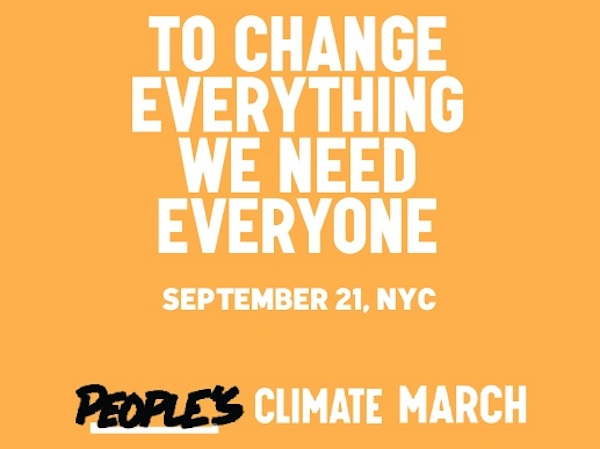
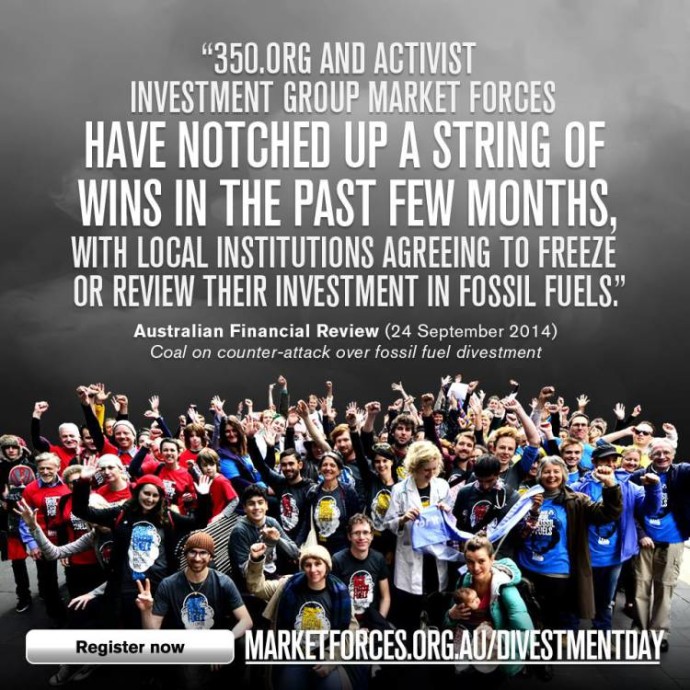
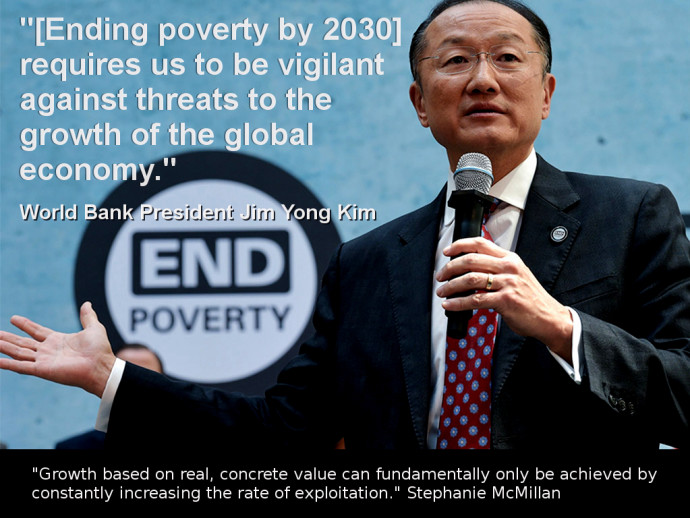
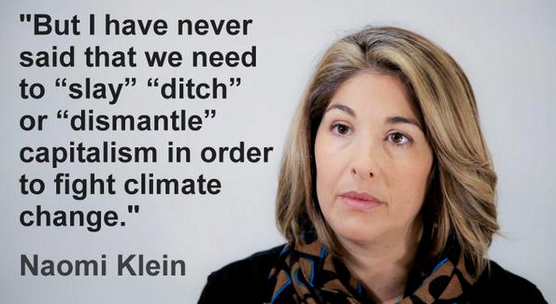




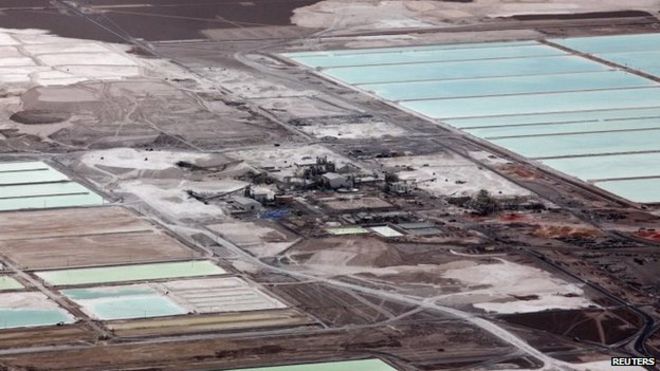
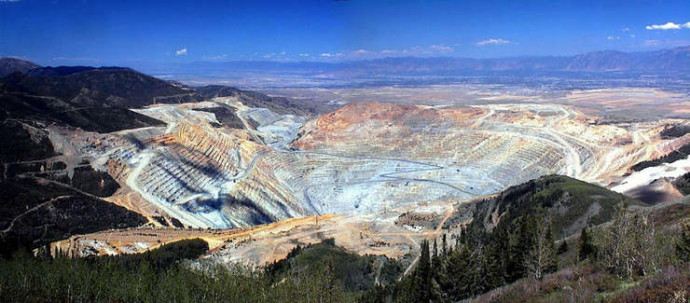



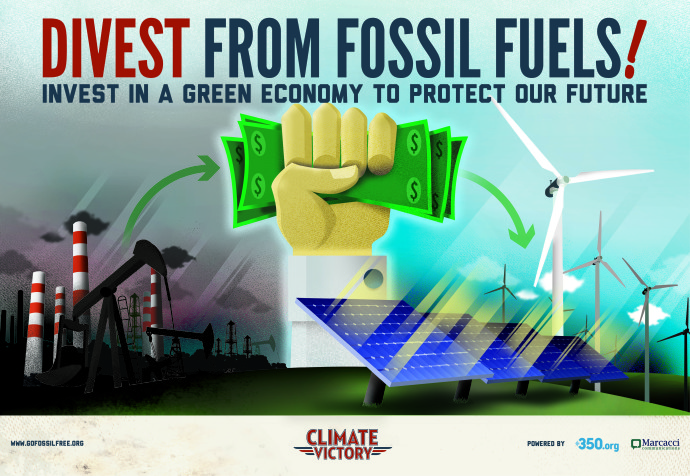

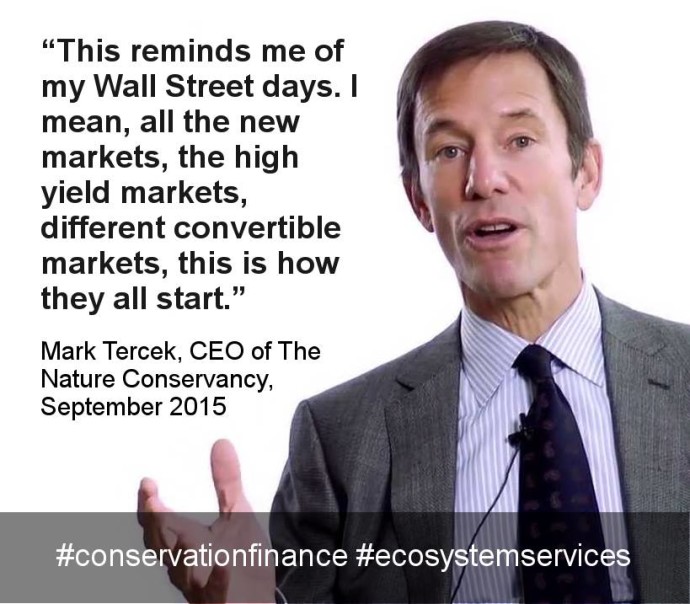
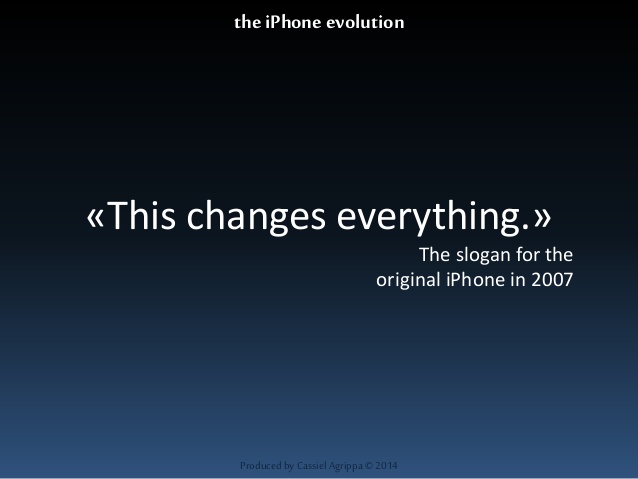
 Become a Patron!
Become a Patron!